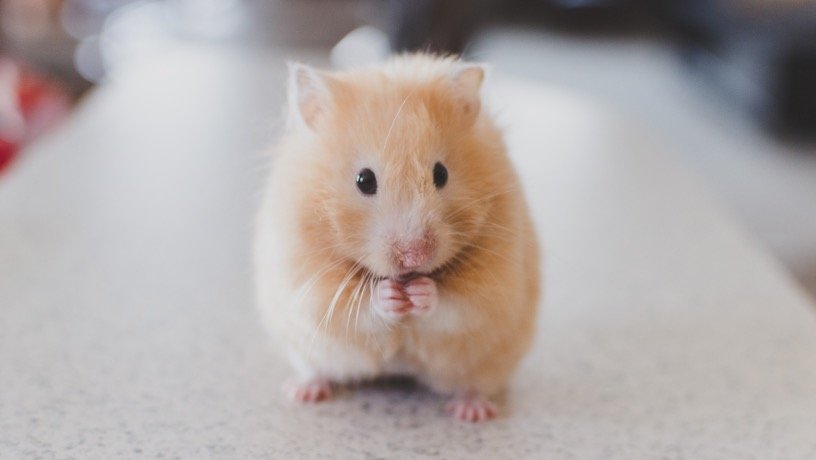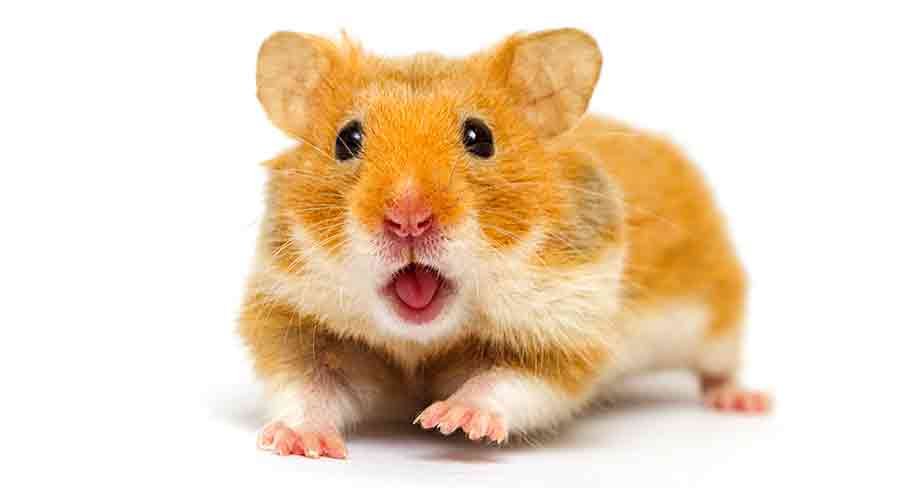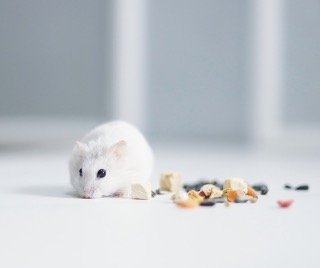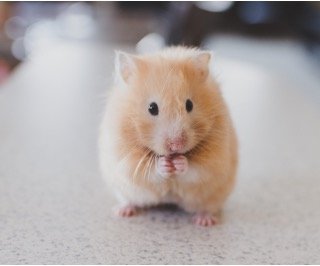It’s damaging to label hamsters as “beginning pets,” as if they’re less valuable and have fewer requirements than other animals, just so that kids may use them as a “learning experience” when they’re first starting to take on responsibilities. This kind of thinking exemplifies speciesism, the false notion that one species is superior to all others. Like you, your dog, and even a tiger, hamsters deserve to be treated with dignity and care since they, too, have unique requirements. You can’t get a “starting pet” because they don’t exist.
Choosing a Hamster as a Pet

Hamsters are a popular pet for both kids and adults. They’re little rodents that live for around two years on average and do best when kept in isolation. Different hamster breeds are recognized for their unique characteristics, and there is a wide range of colors and varieties available.
Also, know 10 Best Small Dog Breeds for Limited Space
As cute as they are, Chinese hamsters just aren’t as common as other types of hamsters. They are commonly misidentified as dwarf hamsters, despite the fact that they are actually normal-sized rodents. They max out at a short 4 inches in length.
Similar to Chinese hamsters but more readily available at pet stores, dwarf hamsters come in numerous kinds such as the Roborovski and the Russian.
Golden hamsters, panda hamsters, teddy bear hamsters, and gerbils are just a few of the many names given to the many color variations of the Syrian hamster. They are the most common kind of hamster, and they are significantly bigger than dwarf and Chinese hamsters.
Hamsters Require Spacious, Safe Environments

It’s important to take measures around other pets in the house since they may pose a threat to your hamster if they mistake it for prey. Hamsters need a secure, roomy, and durable cage to live in to protect them from any damage and to keep them from hurting one another.
Hamsters have very specific housing requirements, and the standard pet store cage just won’t cut it. Cage fury, a stress-related condition that can induce biting, excessive urination, and persistent cage-bar biting that can cause catastrophic harm to teeth, can develop in an animal kept in inadequate confinement. A clear floor area of at least 800 square inches is recommended for large hamsters, while 640 square inches is recommended for dwarf hamsters. We advise you to construct your own hamster cage as very few commercially available cages are suitable. A 75-gallon or larger tank with a mesh lid would work as a makeshift terrarium as well. Your hamster’s health and happiness will improve with more room to run about in.
Bar spacing in a cage shouldn’t be more than 0.5 inches (for giant hamsters) or 0.25 inches (for dwarf hamsters). In addition to being able to flatten their bodies, hamsters can also squeeze through incredibly narrow openings. They wander off and are often hurt or killed, making them hard to find.
Maintain a clean and sanitary environment for your hamster.

Maintaining a clean and comfortable environment for your hamster doesn’t have to come at the expense of needless stress. In a nutshell:
Maintaining a clean bathroom is as simple as everyday cleaning.
Bedding should be changed on a spot basis (when soiled or wet)
Discard their food and water once a week.
Replace the water on a daily basis.
Remove all of their environment once or twice a week.
Alternately, you can wash the sheets and put out new ones every week.
Once a week or so, once all of the bedding, toys, and other components have been removed, you should take some soap and water and clean down the entire habitat. An added measure like that will ensure your hamster’s habitat always smells fresh.
Enrichment
Hamsters enjoy playing with toys and use them for a wide range of behaviours, including chewing, climbing, exploring, burrowing, and hiding. Some common forms of enrichment used by hamster owners are paper bags, cardboard boxes with holes cut out, hideaways, and paper towel rolls. Connecting tunnels made of solid materials also contributes to environmental enrichment, but they require weekly cleaning to maintain their effectiveness.
Exercise wheels are popular among hamster owners. In order to avoid potential harm, it is imperative that only wheels with a smooth surface be provided.
For both enrichment and healthy teeth, most physicians recommend rodent-specific blocks or chew sticks. By switching out their toys on a regular basis, hamsters can be prevented from becoming bored.
Temperature

The ideal conditions for a guinea pig cage range from about 40 to 70 percent humidity and 65 to 80 degrees Fahrenheit. Hamsters can enter a state of torpor, akin to hibernation, when the temperature drops below 40 degrees Fahrenheit.
Nutritional Guidelines for Hamsters
Commercial pellets or blocks designed specifically for hamsters, which include about 16% protein, are ideal for the animals. Brands of pellets or blocks that work well for hamsters include Oxbow and Kaytee. The exact amount of food a hamster needs is dependent on its size and health, but most of them need between 18 and 1/3 cup of pellets daily.
Hamsters can be fed a “formulated” seed diet, but you should only feed them seeds sometimes in addition to their pellets. Seed-based diets typically result in overeating and a deficiency in vitamin E since they do not contain enough of the right components.
Fruits and vegetables can be added to a hamster’s diet as a supplement, but they shouldn’t make up the bulk of their meals. These are some of the things that hamsters enjoy:
Greens
Seeds
Carrots
Apples
Raisins
Peas
Cucumbers with Pepper
Dietary changes, especially drastic ones, can cause severe diarrhea and other gastrointestinal distress in hamsters, which can be fatal. Therefore, make sure to gradually add each additional component.
Locating a Vet for Your Hamster May Prove Challenging

Since it is an “exotic animal,” a hamster needs to be checked by a specialist vet. Unfortunately, many people are unaware of this, and when their hamster becomes unwell, they have to go further than necessary to see a veterinarian that specialises in treating small animals. Finding a veterinarian who treats “exotic” animals can be difficult, and the high cost of doing so may discourage some owners from getting their hamster the care it needs.
Health
Characteristics of a well-balanced hamster
Enthusiastic, perceptive, and friendly
Constantly consumes food and liquids and defecates
Hair that isn’t all thin and bald in patches
The ability to see and breathe clearly
The air we breathe is easy.
Typical walking behaviour
Front hamster teeth are naturally yellow and do not require scraping off the enamel.
Danger Signs
Shedding Extra Pounds
Absence or thinning of hair
Having problems defecating (diarrhoea, a dirty bottom, or a lack of stools)
Excessive effort in breathing or mouth-to-gastric movement
Lethargy
Pus from the eyes or nose
lumps, sores, or scabs on the skin
Dry, itchy skin
Teeth growing too long, losing appetite
Sentences containing “cough,” “sneeze,” or “wheeze”
Persistent puffiness in the cheek sacks that doesn’t go away after a few hours
Hamster Care and Handling

Hamsters prefer to sleep throughout the day and can be easily startled. They can’t see very well, therefore a conversation before you pick them up is highly recommended. When stressed or not properly socialized, hamsters may nip. Since this is the case, they don’t make great pets for young kids.
Hamsters can bite if they are handled aggressively, frightened, or otherwise in an unpleasant state. One way to handle a hamster is gentle cupping with both hands. Hamsters have a lot of additional skin around the neck because of their cheek pouches. A delicate but strong grip on the hamster’s scruff of the neck can help restrain them, but only for a short period of time.
If you want to start handling a new or young hamster, it is best to do so by first delivering modest, high-value rewards. Careful daily handling is essential. To begin, hamsters can be made more sociable, tamed, and cooperative simply by being handled. In fact, some pets grow more loving and affectionate during this period. The surrounding environment is also enriched by daily handling. This, in addition to the constant switching out of toys, is useful in warding off monotony. If a hamster is amenable to this kind of everyday connection, it should begin with shorter, more frequent bursts and progress to longer ones. Hamsters raised in this manner tend to be mild-mannered and kind.





